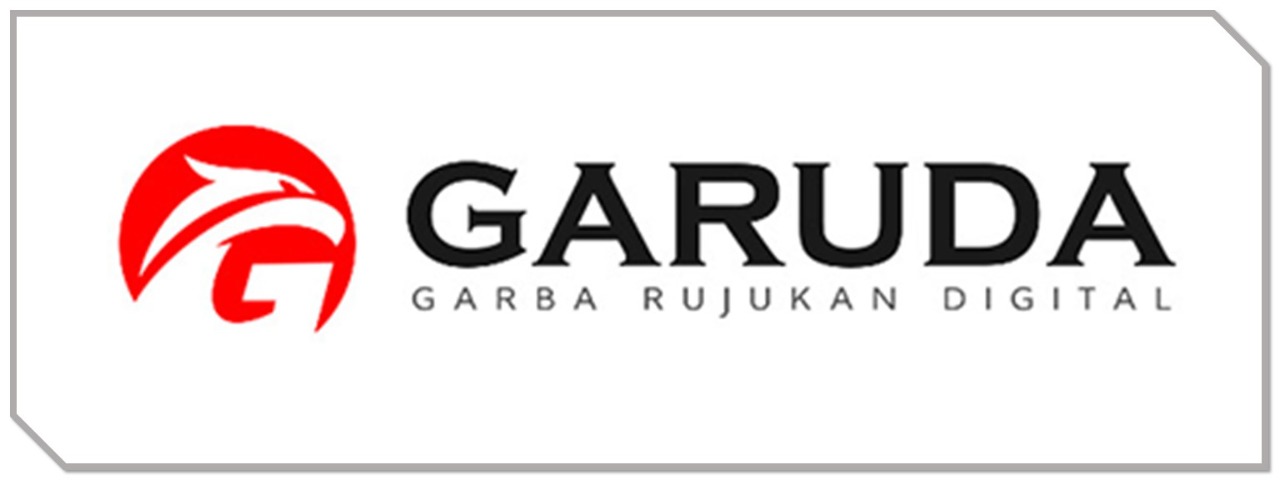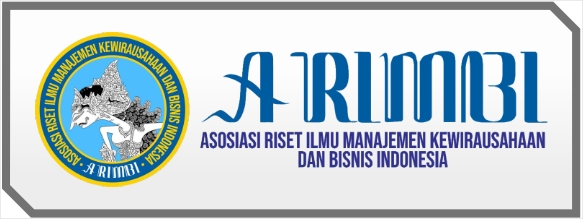ANTESENDEN PERCEIVED WEBSITE SERVICE QUALITY: STUDI KASUS KONSUMEN E-TICKETING
Abstract
Persaingan jasa pelayaran yang semakin kompetitif mendorong penggunaan kemajuan teknologi informasi sebagai salah satu inovasi dalam strategi pemasaran. Website service quality masih menjadi tantangan perusahaan-perusahaan pelayaran yang diindikasikan dengan keluhan atau ulasan negatif. Penelitian ini bertujuan untuk mengidentifikasi antesenden dari perceives website service quality. Penelitian menggunakan pendekatan kuantitatif dengan subjek sebanyak 127 konsumen yang melakukan pembelian e-ticketing di website PT X di Semarang, yang diperoleh secara purposive sampling. Data dikumpulkan menggunakan kuesioner dan kemudian dianalisis menggunakan analisis regresi linier berganda. Hasil penelitian adalah Website Functionality berpengaruh positif terhadap Perceived Service Quality; personalization/customization berpengaruh positif terhadap perceived service quality; dan reputation berpengaruh positif terhadap perceived service quality. Manajemen perusahaan perlu memahami proses pembentukan perceived service quality sehingga dapat mengembangkan strategi pemasaran yang tepat untuk mengakomondasi kebutuhan/keinginan konsumen.
References
DAFTAR PUSTAKA
Baloglu, S. & Pekcan, Y.A. (2006). The website design and internet site marketing practices of upscale luxury hotels in Turkey. Tourism Management, 27:171-176.
Bennett, R. & Gabriel, H. (2003). Imahe and Reputational Characteristics of UK Charitable Organizations: An Empirical Study. Corporate Reputation Review, 6:276-289.
Bevanda, V., Grzinic, J., & Cervar, E. (2008). Analyzing the users’ perceptions web design quality by data mining tools. Tourism and Hospitality Management, 14(2):251-262.
Bitner, M. (1992). Servicescapes: the impact of physical surroundings on customers and employees. Journal of Marketing, 56:57-71
Casalo, L., Flavian, C., & Guinaliu, M. (2008). The role of perceived usability, reputation, satisfaction and consumer familiarity on the website loyalty formation process. Computers in Human Behavior, 24(2):325-345.
Chang, H.H. & Chen, S.W. (2007). Consumer perception of interface quality, security, and loyalty in electronic commerce. Information and Management. 46(7):411-417.
Chiou, W.C., Lin, C.C., & Perng, C. (2010). A strategic framework for website evaluation based on a review of the literature from 1996-2006. Information and Management, 47(5):282-290.
Davis, F.D. (1989). Perceived usefulness, perceived ease of use, and user acceptance of information technology. Management Science, 13(3):319-340.
Dolatabadi, H.R. & Pool, J.K. (2013), Analysis electronic service quality through E-S-Qual scale: the case study of Nowshahr hotel. Research Journal of Applied Sciences, Engineering and Technology, 5(7):2321-2326.
Ha, S. & Stoel, L. (2009). Consumer e-shopping acceptance: antecedents in a technology acceptance model. Journal of Business Research, 62 (5):565-571.
Harison, E. & Boonstra, A. (2009). Essential competencies for technochange management: towards an assessment model. International Journal of Information Management, 29(4):283-294
Herrero, A. & San Martin, H. (2012), Developing and testing a global model to explain the adoption of websites by users in rural tourism accommodations. International Journal of Hospitality Management, 31(4):1178-1186.
Ho, C. & Lee, Y. (2007). The development of an e-travel service quality scale. Tourism Management, 28(6):1434-1449.
Hu, Y.C. (2009). Fuzzy multiple-criteria decision making in the determination of critical criteria for assessing service quality of travel websites. Expert Systems with Application, 36(3):6439-6445.
Jeon, M.M. & Jeong, M. (2016). Customer’s Perceived Website Service Quality and Its Effects on e-Loyalty. International Journal of Contemporary Hospitality Management, 29(1):438-457.
Jeong, M. & Lambert, C.U. (2001). Adaptation of an information quality framework to measure customers’ behavioral intention to use lodging websites. International Journal of Hospitality Management, 20(2):129-146.
Kaya, B., Behravesh, E., Abubakar, A. M., Kaya, O. S., & Orús, C. (2019). The Moderating Role of Website Familiarity in the Relationships Between e-Service Quality, e-Satisfaction and e-Loyalty. Journal of Internet Commerce, 1–27
Kim, W. & Lee, H.Y. (2004). Comparison of web service quality between online travel agencies and online travel suppliers. Journal of Travel and Tourism Marketing, 17 (2/3):105-116.
Law, R. & Cheung, C. (2006). A study of the perceived importance of the overall website quality of different classes of hotels. International Journal of Hospitality Management, 25(3):525-553.
Lee, D., Moon, J., Kim, Y., & Mun, Y. (2015), Antecedents and consequences of mobile phone usability: linking simplicity and interactivity to satisfaction, trust, and brand loyalty. Information & Management, 52(3):295-304.
Liao, C., Palvia, P., & Lin, H. (2006). The roles of habit and web site quality in e-commerce. International Journal of Information Management, 26(6):469-483.
Madu, C.N. & Madu, A.A. (2002). Dimensions of e-quality. International Journal of Quality and Reliability Management, 19(3):246-258.
Mattila, A.S. & Wirtz, J. (2001). Congruency of scent and music as a driver of in-store evaluations and behavior. Journal of Retailing, 77(2):273-289.
Melawati, R. & Wijaksana, T.I. (2020). Pengaruh Fungsi Website, Persepsi Kegunaan dan Persepsi Manfaat terhadap Kepuasan Pelanggan Bukalapak. Jurnal Ilmiah Mahasiswa Ekonomi Manajemen, 5(4):821-833.
Parasuraman, A., Zeithaml, V. A., & Malhotra, A. (2005). E-S-QUAL a multiple-item scale for assessing electronic service quality. Journal of Service Research, 7(3), 213–233
O’Cass, A. & Carlson, J. (2010). Examining the effects of website-induced flow in professional sporting team websites. Internet Research, 20(2):115-134
Park, Y.A. & Gretzel, U. (2007). Evaluation of emerging technologies in tourism: the case of travel search engines. in Hits, M., Sigala, M., & Murphy, J. (Ed.), Information and Communication Technologies in Tourism 2006, Springer-Wien, New York, NY:371-382
Sanchez-Franco, M. & Roldan, J. (2005). Web acceptance and usage model: a comparison between goal-directed and experiential web users. Internet Research, 15(1):21-48
Shah, A.I. & Zuliestiana, D.A. (2019). Analisa Pengaruh Website Perceived Service Quality terhadap Customer e-Loyalty Layanan Website Tiket.com. e-Proceeding of Management, 6(2):1892-1900.
Shobeiri, S., Laroche, M., & Mazaheri, E. (2013). Shaping e-retailer’s website personality: the importance of experiential marketing. Journal of Retailing and Consumer Services, 20 (1):102-110
Vilnai-Yavets, I. & Rafaeli, A. (2006). Aesthetics and professionalism of virtual servicescapes. Journal of Service Research, 8 (3):245-259
Yang, Z., Cai, S., Zhou, Z., & Zhou, N. (2005) Development and validation of an instrument to measure user perceived service quality of information presenting web portals. Information and Management, 42(4):575-589.
Zeithaml, V.A., Parasuraman, A., & Malhotra, A. (2002). Service quality delivery through web sites: a critical review of extant knowledge. Journal of the Academy of Marketing Sciences, 30(4): 362-410.
DOI: https://doi.org/10.62826/muara.v7i2.89
Refbacks
- There are currently no refbacks.









